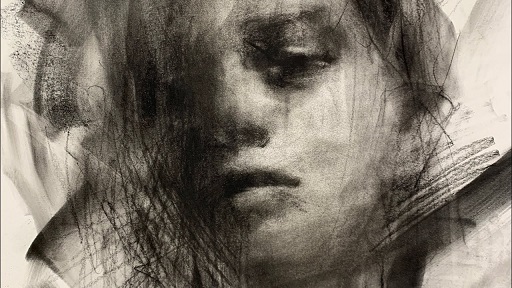Contents
Know How to Draw with Charcoal
Drawing with charcoal is a popular medium that can create stunning three-dimensional and versatile works of art.
Whether you’re new to the art world or exploring other mediums, drawing with charcoal can take some time to get the hang of, but can eventually help you master other art forms. It’s as easy as choosing a material, learning how to hold charcoal, and creating a painting.
Part 1
Choose your material
- Choose from a variety of soft and hard charcoal. Just like any other art medium, charcoal comes in many varieties. However, each type of charcoal is classified according to whether it is hard or soft. Harder charcoals produce lighter clean edges, while softer charcoals are better for blending and creating deeper lines.
Compressed Charcoal Stick is a hard charcoal that is great for creating darker lines. Compressed charcoal also comes in white to help with highlighting.
Soft charcoal is great for blending and creating smudges throughout the composition. However, these are some of the most difficult charcoals to work with.
Use powdered charcoal for a lighter look if you’re toning larger areas. However, it’s often very messy.
- Choose plain white, charcoal, or colored paper. When it comes to paper, there are a variety of options. Choosing the right paper for your work can take some trial and error. Experiment with several different paper styles and charcoal hardnesses to choose what works best for you.
Plain white paper, newsprint, cardboard , and illustration board are good choices for flowing drawings. Plain white paper is also easy to create natural highlights because the gray or white of the paper combines with the color of the charcoal.
Charcoal, pastel, and watercolor papers have a finely ribbed texture that helps create sharper lines.
Toned paper that requires you to use both white and black charcoal.
- Purchase erasers, mixing stumps and/or white chalk. The kneaded eraser can completely erase chalk. These, along with blending stumps and white chalk, can also be used to help create shadows and highlights in your drawings.
- If you’re just starting out, work at an easel. Drawing with charcoal can be tricky to master because any accidental contact you make with your charcoal drawing can cause it to smudge. Start by working in an area where you can keep the drawing vertical and in an area that is well lit.
You should always choose a well-lit area as charcoal drawing is on the darker side and it can be difficult to see highlights, shadows and details of the drawing.
- Pick up the fixative to hold the charcoal in place. “Fixing” your drawing when you’re done will keep dust from getting on the charcoal. Fixative comes in the form of a spray, which is applied by spritzing it onto your work.
Fixatives are of two types, final and viable. Many artists use workable spray because you can make small changes to the work after restoration. You cannot change your job after using the final fixative.
You can use hairspray as a substitute, but be careful as it will darken your drawing surface a bit.
Part 2
Holding charcoal
- Hold the charcoal like a pencil to get a sharp edge. If you want to create defined lines and edges, your best bet is to hold it like you would normally hold a pencil. This stroke allows you to ensure that only the charcoal dots are in contact with the paper.
Apply more pressure to your strokes for a firm, darker line.
- Lay charcoal on its side to create wider strokes. The easiest way to do this is to hold the charcoal between your thumb and forefinger, palm down. This allows you to create wider strokes without smudging your artwork.
Use wide swiping motions to fill larger areas on the paper.
- Let your shoulders and elbows guide your stroke. One of the hardest parts of learning to draw with charcoal is keeping your wrists away from the page. Try using your shoulders and elbows instead of your wrists for your strokes to give yourself a greater range of motion and avoid accidentally smudging your work.
Part 3
Create your drawing
- Use charcoal to draw any geometric shape. Everything contains geometric shapes. The easiest way to start drawing with charcoal is to identify basic shapes and lightly outline them in your drawing.
If you’re drawing a subject, be sure to sketch the entire character or scene before moving on to individual details. For example, if you’re drawing a face, start with a round or square outline. Or use an oval to start drawing the vase.
Charcoal is great for basic sketches.
Mark any high-contrast areas with lines. If you’re drawing a face, outline the eyes, mouth, and nose to allow yourself to better outline your subject.
- Use compressed charcoal to add defined edges to your drawings. After you’ve sketched the main shapes, go back and add more realistic features. Make sure to revisit your artwork and sharpen the edges to help define each area of the drawing.
Use the kneaded eraser to sharpen the outline of the subject.
- Smudge charcoal with blended stumps to add shading. Charcoal is great for creating three-dimensional shapes and bringing your creations to life. To add these shadows, use a roll-up paper or your fingers to apply and blend charcoal.
Apply to areas around the contours of the face to add dimension, such as the crease of the nose. You can also use smudges to create the texture of the flowers.
- Use the eraser to create a range of dark and light colors. Kneading erasers are great because they can be used as a smudging or blending tool. If your subject has a brighter area, you should surround it with a darker background, and vice versa.
You can use the eraser to pull out the whites to create contrast and highlight darker areas.
If you don’t want to rub off the charcoal to create highlights, you can use chalk or conte crayons.
Conte crayons come in black and white to enhance your drawings.
- Use a soft pencil to shade your drawing to make it more realistic. Hatching is a great technique to shade out wider areas. You can use circles , outline shading, or crosshatching to create realistic skin.
- Spray the fixative on your drawing to hold the charcoal in place. You always want to be in a well-ventilated area before applying a fixative. Keep the jar no more than 1 foot (12 inches) from your drawing. Spray the fixative all over the painting and let it dry completely.
If you still notice dust on your charcoal drawing, reapply the fixative.

